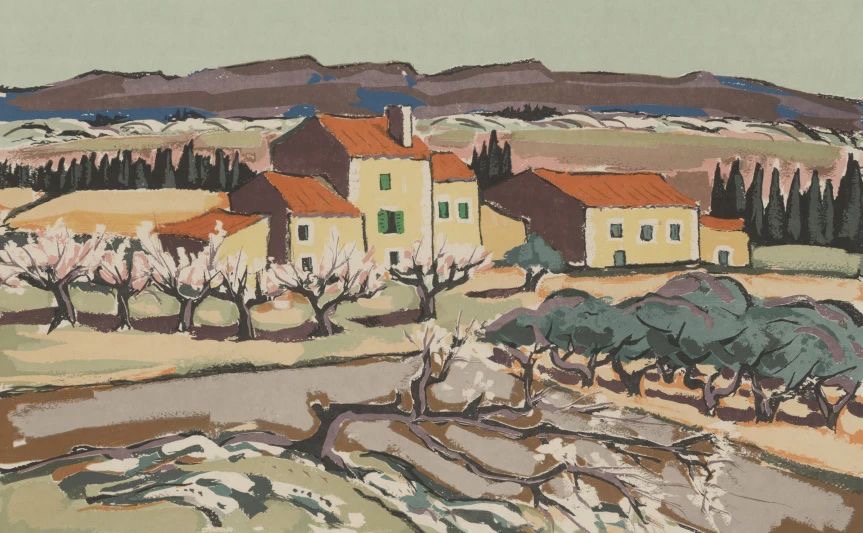SOURCE:观澜版画PUBDATE:2023-08-02
Meaning of Landscape
Landscape Prints Collection Exhibition of China Printmaking Museum
Exhibition Dates:
2023.7.19-8.31
Exhibition Place:
Exhibition Hall 2, China Printmaking Museum
Organizer:
China Printmaking Museum


Preface
The aesthetic spirits of Confucianism, Taoism, and Zen Buddhism have nourished the art of Chinese landscape painting, giving rise to aesthetic concepts such as “The benevolent rejoice in mountains, the wise rejoice in water.” and the artistic theory of “drawing inspiration from the patterns of nature, and attaining profound understanding within one’s innermost being”. The Renaissance in Europe, on the other hand, gave birth to Western landscape painting. In his writings on aesthetics, Dürer proposed that “art exists in nature”. Western painters have continuously explored the relationship between beauty and nature step by step through perception and practice. It was not until the 17th century, with the efforts of Dutch painters, that landscape painting gradually developed into a genre in its own right. As the 18th and 19th centuries progressed, artists gained a broader and deeper understanding of landscape painting. J.M.W. Turner, the British landscape painter, believed that “landscapes could convey a full range of artistic, historical, and emotional meanings”.

As painting practice and artistic theory developed, Western philosophers have also continuously developed an artistic aesthetic derived from nature, advocating the use of the beauty of art to refine feelings and reveal the essence of humanity. Kant believed that “a man who turns to the beauty of nature and possesses a refined taste in artistic judgment has a soul imbued with beauty”. Merleau-Ponty said, “The artist's task is to capture the spectacle that people have not seen, but are immersed in, and to convey them to the most ‘human’ part of the human heart. Nowadays, as the concepts of contemporary art enjoy popular support, some individuals have begun to delve deeper into the “meaning of landscapes”. From a philosophical perspective, American philosopher John Sallis critically examined landscape painting in both the Eastern and Western traditions. He proposed three meanings of landscape painting: “earthly,” “natural”, and “topographic”. He believed that the meaning of landscape lies in concepts such as the “self-revelation of landscape”, which offers new perspectives for the aesthetic study of landscape painting.

It is an honor that this exhibition, held at China Printmaking Museum, has been selected as part of the 2023 Project of the National Arts Museum Refined Collection Exhibition Season organized by the Ministry of Culture and Tourism. The exhibition is divided into three sections: “The Return of Nature”, “The Hidden Beauty of Landscape”, and “Resonance of Landscapes”, featuring a total of 58 landscape artworks from both Eastern and Western traditions. From the depiction of landscape themes in these works, one can observe the artists’ understanding and attitude toward nature, the self, and the essence of art. “Every landscape is, as it were, a state of the soul”, said the Swiss philosopher Henri Frederic Amiel. There is a rich, delicate and sensitive soul in the artists who painted these landscapes, for which they are able to feel the warm and cool tones of landscapes, hear the melodies of spectacle, and capture the exquisite colors and unique meanings of nature. However, they deliberately choose printmaking, which is characterized by condensation and a spirit of simplicity, to depict the infinitely rich world of beauty with minimal color relationships that triumph over an abundance of colors.

Lu Xun pointed out that printmaking is an art form with the beauty of “power”. In this exhibition, we hope that the audience can appreciate and experience the beauty of landscapes and the power of printmaking, perceive the rich souls of the artists, and resonate with them. Let’s embark on a journey of culture and nature alongside the artists, seeking out the open and hidden meanings within the landscapes.
FEATURED WORKS
1.The Return of Nature
Since the 1950s, there has been a transformation in the theme and content of Chinese printmaking, with expression of emotions and celebration of life becoming the mainstream ones, which aims to portray the magnificent scenery in this land and the painters’ homesickness. This marks the return of Chinese printmaking to nature.


2.The Hidden Beauty of Landscape
Painting offers the audience a unique perspective to appreciate landscapes. It is a form of Heidegger's concept of world disclosure, an opening to truth and existence, allowing people to see the invisible part of beauty.


3.The Resonance of Scenery
Some landscape prints, as if imbued with the power of natural elements, evoke a sense of awe that leaves people standing in silence, experiencing the tremor in their souls.




 Telephone 0755-27617814Email liccsz@163.com
Telephone 0755-27617814Email liccsz@163.com
Address 4 / F, Tower B, OCT Central One, Mintang Road, Longhua District, Shenzhen
Opening Hours 9:00 a.m. - 12:00 p.m., 2:00 p.m. - 6:00 p.m. Monday to Friday (excluding statutory holidays)